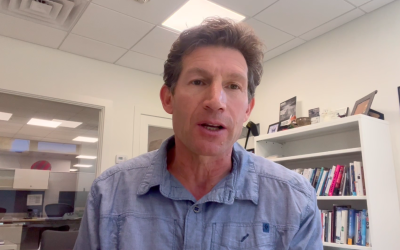Destination British Columbia (DBC) has set its sights on becoming the most recommended destination in North America. How does the province intend to lead its six regional destinations and even more city and community destination marketing organizations (DMOs) toward a common objective?
Grant Mackay, DBC’s Vice President of Destination & Industry Development, has been a tourism management leader in British Columbia for more than 20 years and is currently responsible for overseeing the tourism destination and industry development designed to increase BC’s worldwide competitive position. Destination Think has assisted DBC with its strategic planning and serves as the organization’s social agency of record, and Mackay was invited to participate on our Cost and Revenue panel at Destination Think Forum event in New York.
In part one of this two-part interview, Mackay describes DBC’s new “tourism ecosystem” and the three pillars that support his organization’s strategy for the future.
Destination Think: Destination BC introduced a new strategy a few years ago. How would you describe the latest evolution of the corporate strategy?
Grant Mackay: In 2013, we really stepped back to look at how the whole tourism ecosystem was working.
The ecosystem involves not only all the destination and product sector marketing organizations, but also the businesses and our visitors. And we asked whether that ecosystem was working effectively to satisfy the needs of the future. We said, well, maybe it isn’t. Maybe we need to work on developing a new strategy that looks at different ways of how we can collaborate and do more with the resources that we had.
This led to a strategy with three pillars.
The first pillar was to create a magnetic brand and ask how industry might align with that brand. That would create a critical mass of messaging that is aligned to the tone and perspective of the provincial brand.
Not only did we want it to be a magnetic brand for visitors, but we also wanted it to be something that industry could use in a tangible way to benefit everyone.
We also strive to foster remarkable experiences. We know that we do a really great job on the advertising and promotional side. However, we also recognize that at the end of the day, our message is only one of the messages that gets out there. The more dominant message probably comes from what our visitors are saying on social media.
This made us realize that we should be spending time ensuring that our destination and all the component pieces that make up an experience are memorable and remarkable.
(Editor’s note: For example, read about the ”Message in a Bottle” experience one tourism operator created as an outcome of the Remarkable Experiences training program led by Destination Think)
The last pillar involves asking how we can create a more powerful network of businesses and DMOs. That speaks to how we can share information and insights among all DMOs so that they can plan more effectively. This includes the regional and community DMOs in British Columbia. We have a vast amount of knowledge we hold quite closely, as we start to plan.
We would like to inform this network with the best and most current insights. We looked at other ways to create more efficiencies using technology tools. If we’re all trying to develop and use technology, we probably could do it a more efficient way if we define what the tool is, and look towards scaling it and allowing it to be used by everyone. That way, we save everyone the costs of duplicating that effort.
What other opportunities do you see within this network?
We have three assets that involve content management. We have intellectual assets, content assets and marketing technology assets. We’re duplicating our efforts in many ways when it comes to content management. For example, if I want information on Victoria, I can gather it. Victoria is also gathering it. Others are gathering it too. But why are we duplicating all that effort?
We’d like to develop a new system that can manage not only content that we produce, but content that we can curate. This new powerful marketing network needs to use a totally different operating system to make our DMO ecosystem even stronger and drive further collaboration.
How do you define success under this new strategy?
This industry has a very difficult time determining what core measures of success are. I think one of the real opportunities is to take a look at what our common goals are and then identify the core measure that would actually indicate whether or not you are achieving those goals.
And then all of us in the ecosystem would adopt those measures, depending on whether or not our goals and our activities are somewhat similar.
Then we can build a common view of what might success be. There’s going to be campaign success measures. There will also be destination development success measures and each will potentially be different. This is something that we need to spend more time on as we change our strategy.
“Think about the things we can do together, because we’re DMOs. We can compete, we can coexist, or we can collaborate.” Learn about change management in part two of this interview with Destination British Columbia’s Grant MacKay.
Featured image: The temperate rainforest in Bella Coola, British Columbia. Image credit: Robyn Hanson










0 Comments